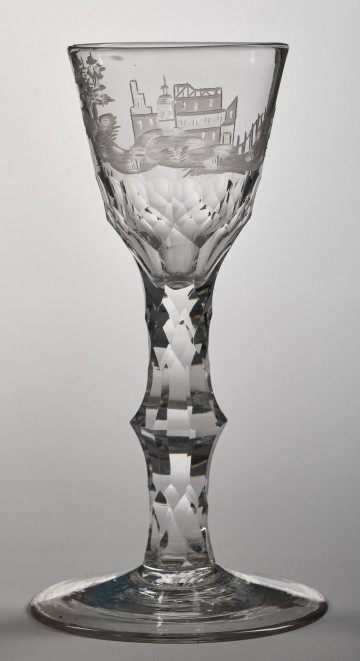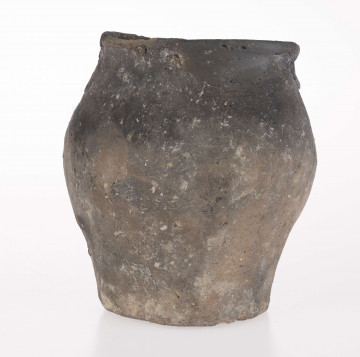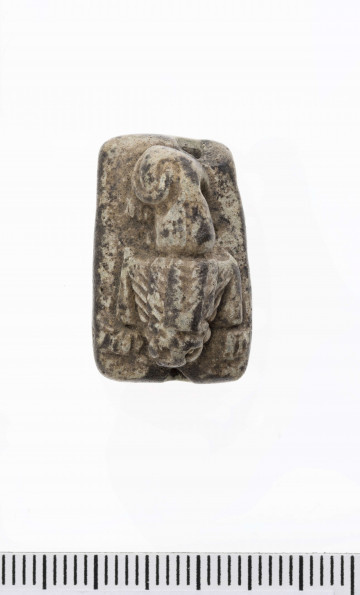
Glass with a castle motif
18th century
Castle Museum in Łańcut
Part of the collection: Archaeological monuments of the Lublin region
Made of glass, the small bowl was one of the elements of equipment from a late Roman period burial (end of the 3rd - 1st half of the 4th century AD) discovered in a multicultural settlement. Research at the site was undertaken in 1959 by archaeologists from the State Archaeological Museum in Warsaw. An archaeological intervention by Dr Jan Kowalczyk, followed by systematic excavations carried out in 1959 and 1960 by Teresa Liana and Teresa Piętka-Dąbrowska, provided numerous finds from various chronological periods. After being processed, these materials, territorially related to the Lublin region, were transferred to the collection of the Department of Archaeology of the National Museum in Lublin.
The most interesting of the discovered objects is undoubtedly the grave which contained the skeleton of an approximately thirteen-year-old girl and the accompanying grave goods: 9 vessels, 2 of which are handmade and 7 are high-grade turned pottery, as well as an earthenware rattle, a silver clasp and a glass vessel.
The glass vessel is almost complete. Under its spout there is a decoration with a horizontal thread circling the body 1.5 times. The teapot is made of clear, colourless glass with a slightly yellowish tint. It was made by the method of blowing in a mould with rotation. The decoration was made by sticking a hot glass thread onto the shaped vessel.
The grave goods and the nature of the burial indicate that it was associated with the people of the so-called Masłomęcz group, who in the younger Roman period created a highly developed civilization in the Hrubieszów Basin and maintained close contacts with the ancient world, as evidenced by the imported glass vessel. In antiquity, glass vessels were a luxury commodity and the technique of their manufacture was one of the most guarded secrets. In the Polish lands they appear as imports and are the proof of lively contacts of "barbarian" cultures with the ancient world. It is one of only a dozen or so well-preserved glass vessels in the Lublin area. The vessel from Werbkowice is unique due to its form and extremely interesting due to the context of its discovery.
Author / creator
Dimensions
cały obiekt: height: 56 cm, diameter: 68 cm
Object type
dish
Technique
blowing
Material
glass
Creation time / dating
Creation / finding place
Owner
The National Museum in Lublin
Identification number
Location / status

18th century
Castle Museum in Łańcut

280 — 300
National Museum in Lublin

National Museum in Lublin
DISCOVER this TOPIC
National Museum in Szczecin
DISCOVER this PATH
Educational path